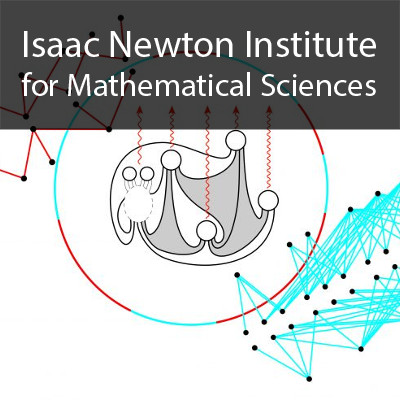A classification of some 3-Calabi-Yau algebras
53 mins 39 secs,
236.23 MB,
WebM
640x360,
29.97 fps,
44100 Hz,
601.17 kbits/sec
Share this media item:
Embed this media item:
Embed this media item:
About this item

| Description: |
Smith, P (University of Washington)
Wednesday 29th March 2017 - 10:00 to 11:00 |
|---|
| Created: | 2017-04-04 09:26 |
|---|---|
| Collection: | Operator algebras: subfactors and their applications |
| Publisher: | Isaac Newton Institute |
| Copyright: | Smith, P |
| Language: | eng (English) |
| Distribution: |
World
|
| Explicit content: | No |
| Aspect Ratio: | 16:9 |
| Screencast: | No |
| Bumper: | UCS Default |
| Trailer: | UCS Default |
| Abstract: | This is a report on joint work with Izuru Mori and work of Mori and Ueyama.
A graded algebra A is Calabi-Yau of dimension n if the homological shift A[n] is a dualizing object in the appropriate derived category. For example, polynomial rings are Calabi-Yau algebras. Although many examples are known, there are few if any classification results. Bocklandt proved that connected graded Calabi-Yau algebras are of the form TV/(dw) where TV denotes the tensor algebra on a vector space V and (dw) is the ideal generated by the cyclic partial derivatives of an element w in TV. However, it is not known exactly which w give rise to a Calabi-Yau algebra. We present a classification of those w for which TV/(dw) is Calabi-Yau in two cases: when dim(V)=3 and w is in V^{\otimes 3} and when dim(V)=2 and w is in V^{\otimes 4}. We also describe the structure of TV/(dw) in these two cases and show that (most) of them are deformation quantizations of the polynomial ring on three variables. |
|---|---|
Available Formats
| Format | Quality | Bitrate | Size | |||
|---|---|---|---|---|---|---|
| MPEG-4 Video | 640x360 | 1.94 Mbits/sec | 781.27 MB | View | Download | |
| WebM * | 640x360 | 601.17 kbits/sec | 236.23 MB | View | Download | |
| iPod Video | 480x270 | 522.23 kbits/sec | 205.14 MB | View | Download | |
| MP3 | 44100 Hz | 249.74 kbits/sec | 98.23 MB | Listen | Download | |
| Auto | (Allows browser to choose a format it supports) | |||||

